דורך קריס גרינטער, on July 25th, 2011 This Monday I am departing from the usual Arctiinae for something completely different – a microlep! This is a Nepticulidae, Stigmella diffasciae, and it measures in at a whopping 6 OR. I can’t take credit for spreading this moth – all of the nepticulids I have photographed are from the California Academy of Sciences and spread by Dave Wagner while he was here for a postdoctorate position.
The caterpillars mine the upper-side of the leaves of Ceanothus and are known only from the foothills of the Sierra Nevada in California. If you’re so inclined the revision of the North American species of the genus is freely available here (.PDF).
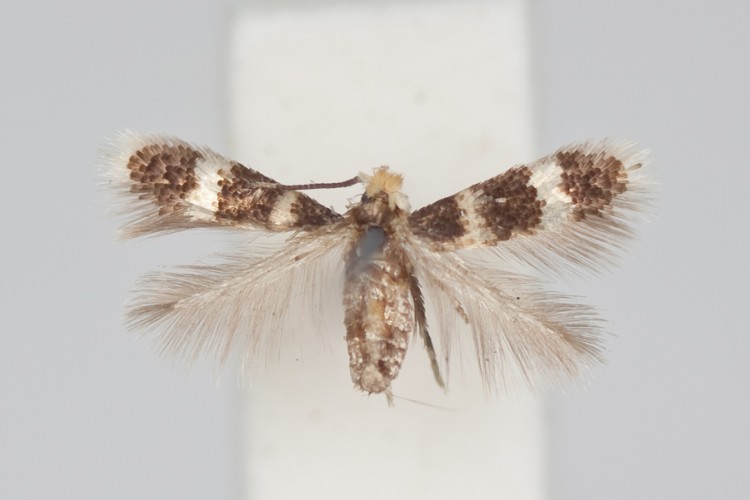 Stigmella diffasciae (נעפּטיקולידאַע)
דורך קריס גרינטער, אויף יולי 22, 2011 It’s been a little while since the last GOP challenge, אָבער this is a softball. I’m hoping they were just too lazy to find a more suitable image…

דורך קריס גרינטער, on July 19th, 2011 וואָס וואָלט יאָשקע טאָן אויב ער האט עטלעכע פריי צייט – אפֿשר היילן אַ קרענק, סוף אַ מלחמה, אָדער קאָרמען די הונגעריק – אָבער ניין, אַלעמען זעט אַז קומען. פארוואס נישט קלאַפּ זיי צו די האַרץ – פאַרברענען דיין פּנים אויף אַ וואַלמאַרט קאַבאָלע! צום ווייניגסטענס, דאָס איז וואָס אַ פּאָר אין דרום קאראליינע גלויבן צו האָבן געפֿונען, אַ וואַלמאַרט קאַבאָלע מיט יאָשקע 'ס פּנים אויף עס. דאָס איז נישט פּונקט נייַ אָדער יקסייטינג, מענטשן האָבן אַ ווונדערלעך פיייקייַט צו דערקענען אַ פּנים אין כּמעט אַלץ. יאָשקע און אנדערע אותיות “זיך באווייזן” אויף טראַפ - זאכן אַלע די צייַט, און אפילו אין 2005 א מיזבייעך איז געבויט געווארן פאר די ווירגין מרים ארום א וואַסער פלעק אין אַ טשיקאַגאָ אַנדערפּאַס.
פּאַרידאָליאַ ווער עס יז? פאקטיש, אַז פּנים קוקט שיין קאַנווינסינג, איך בין נישט צו זיכער אַז דאָס איז נישט נאָר פאַקינג אָדער “ימפּרוווד”. די קלאָסאַפּס אפילו קוק ווי עס זענען פינגגערפּרינץ איבער עס. זינט איך טאָן ניט האָבן אַ וואַלמאַרט ערגעץ לעבן מיר אָדער אַ וואַלמאַרט קאַבאָלע אויף האַנט, איך קען נישט באַשליסן ווי שפּירעוודיק די פּאַפּיר איז און ווי גרינג עס וואָלט האָבן געווען צו טאָן – אָבער ווי לאַנג טאָן איר טראַכטן איידער עס איז געוויזן אויף עבייַ? אין קיין געשעעניש, עס קוקט פיל מער ווי יעקב ראַנדי צו מיר ווי יאָשקע (אין מינדסטער מיר פאקטיש וויסן ווי ראַנדי קוקט ווי!).
 פֿון CNN
דורך קריס גרינטער, אויף יולי 18, 2011 איבער אויף אַרטהראָפּאָדאַ, יונגערמאַן ספס בלאָגגער מיכאל באַק שערד אַ בילד פון זיין פעלד באַדי, פּלוגג די גרין בוים זשאַבע. My first thought was of a similar tree frog that haunted welcomed me everywhere I went in Santa Rosa National Park, קאָסטאַ ריקאַ. יבעריק צו זאָגן, Costa Rica instills a sudden habit of double checking everything you are about to do. This species is known as the milk frog (Phrynohyas venulosa) for their copious amounts of milky white toxic secretions. One of the first stories Dan Janzen told me while while I was with him at Santa Rosa was about this species – and accidentally rubbing his eye after holding it. Thankfully the blindness and burning was only temporary.
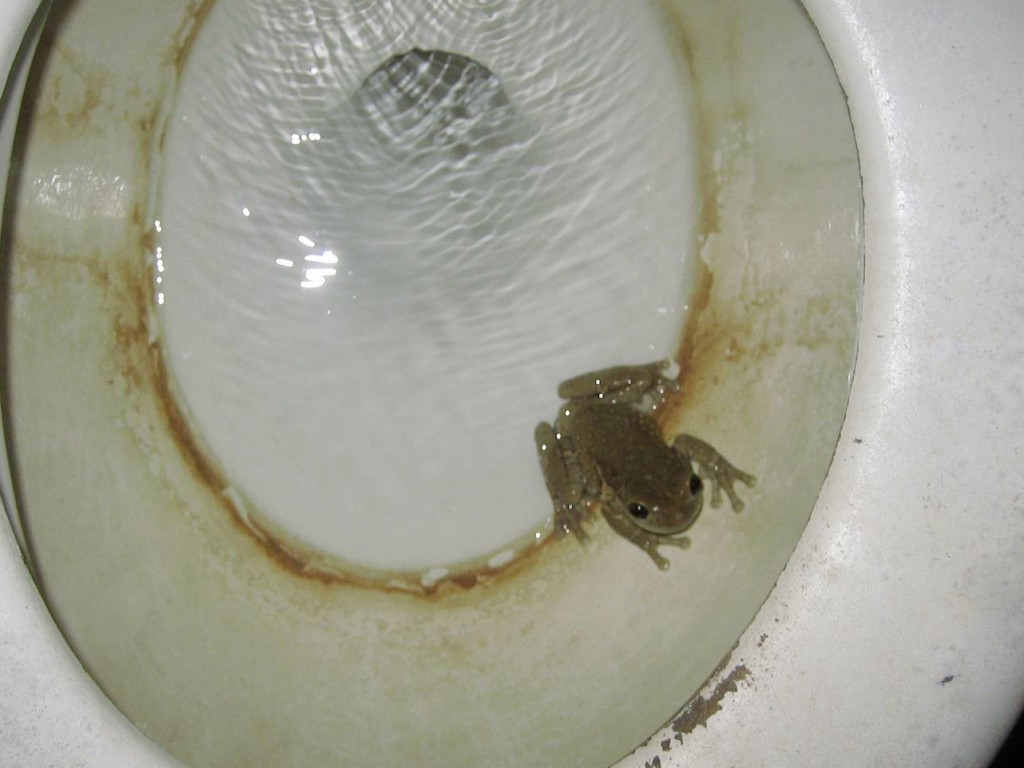 Milk Frog: Phrynohyas venulosa
דורך קריס גרינטער, אויף יולי 18, 2011 I’ll keep the ball rolling with Arctiinae and post a photo today of Ctenucha brunnea. This moth can be common in tall grasses along beaches from San Francisco to LA – although in recent decades the numbers of this moth have been declining with habitat destruction and the invasion of beach grass (Ammophila arenaria). But anywhere there are stands of giant ryegrass (Leymus condensatus) you should find dozens of these moths flying in the heat of the day or nectaring on toyon.
 Ctenucha brunnea (ערעבידאַע: אַרקטיינאַע)
דורך קריס גרינטער, on July 12th, 2011 Well as you may have guessed the subject isn’t as shocking as my title suggests, but I couldn’t help but to spin from the Guardian article. I really find it hilarious when I come across anything that says scientists are “astounded”, “baffled”, “shocked”, “puzzled”, – I guess that’s a topic for another time… Nevertheless a טאַקע cool butterfly has emerged at the “Sensational Butterflies” exhibit at the British Museum in London – אַ ביילאַטעראַל גינאַנדראָמאָרף! The Guardian reports today that this specimen of Papilio memnon just emerged and is beginning to draw small crowds of visitors. I know I’d love to see one of these alive again – although the zoo situation would take away quite a bit of the excitement. I think the only thing more exciting than seeing one of these live in the field would be to net one myself!
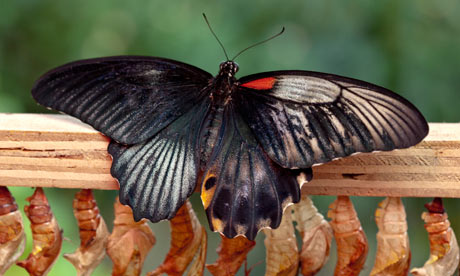
One little thing tripped my skeptical sensors and that is the quote at the end of the article taken from the curator of butterflies, Blanca Huertas. “The gynandromorph butterfly is a fascinating scientific phenomenon, and is the product of complex evolutionary processes. It is fantastic to have discovered one hatching on museum grounds, particularly as they are so rare.”
געזונט, I don’t specifically see how these are a “product of … evolutionary processes” inasmuch as אַלע life in אַלע forms is a product of evolution. These are sterile “glitches” that are cool, but not anything that has been specifically evolved for or against. Perhaps it would be more adept to call this a fascinating process of genetics (which the article actually describes with accuracy). אויך – butterflies emerge as adults and hatch as caterpillars – but that’s just me being picky.
דורך קריס גרינטער, on July 11th, 2011 Today’s moth is a beautiful and rare species from SE Arizona and Mexico: Lerina incarnata (ערעבידאַע: אַרקטיינאַע). Like many other day flying species it is brilliantly colored and quite likely aposematic. After all, the host plant is a milkweed and the caterpillar is just as stunning (ונטער).
 Lerina incarnata (ערעבידאַע: אַרקטיינאַע)
This image of an old, spread specimen hardly does the animal justice, but one lucky photographer found a female ovipositing at the very top of a hill outside of Tucson, אַריזאָנאַ. While you’re at it go check out some of Philip’s other great photographs on SmugMug.
 Lerina incarnata - Philip Kline, BugGuide As I mentioned above this moth also has an equally impressive caterpillar that feeds on Ascleapias linaria (pineneedle milkweed).
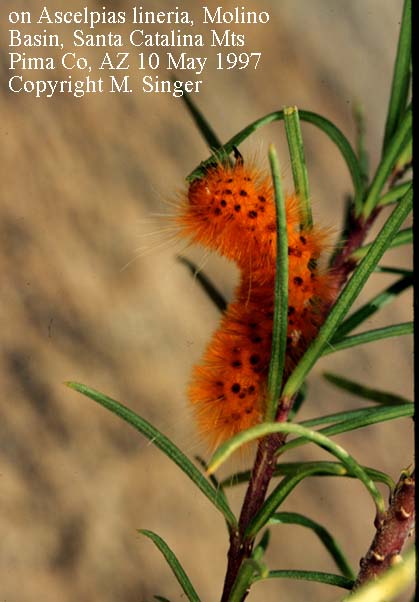
דורך קריס גרינטער, on July 5th, 2011 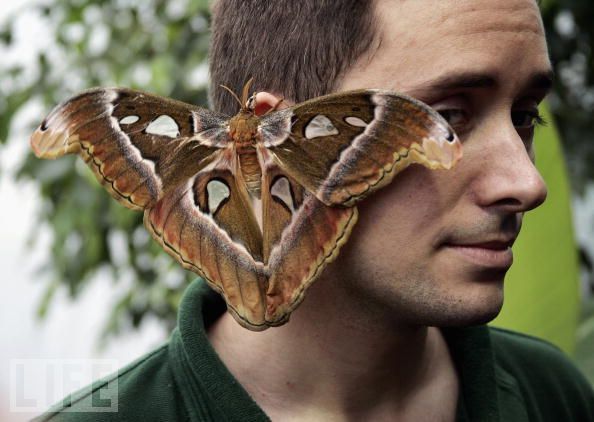
It seems like there is a preponderance of urban legends that involve insects crawling into our faces while we sleep. The most famous myth is something along the lines of “you eat 8 spiders a year while sleeping“. Actually when you google that the number ranges from 4 to 8… up to a pound? Not surprising things get so exaggerated online, especially when it concerns the ever so popular arachnophobia. I doubt the average American eats more than a few spiders over their entire lifetime; your home simply shouldn’t be crawling with so many spiders that they end up in your mouth every night! A similar myth is still a myth but with a grain of truth – that earwigs burrow into your brain at night to lay eggs. It isn’t true that earwigs are human parasites (thankfully), but they do have a predisposition to crawl into tight, damp places. It is possible that this was a frequent enough occurrence in Ye Olde England that the earwig earned this notorious name. Cockroaches have also been documented as ear-spelunkers – but any crawly insect that might be walking on us at night could conceivably end up in one of our orifices.
I have however never heard of a moth crawling into an ear until I came across this story today! I guess a confused Noctuid somehow ended up in this boy’s ear, although I can’t help but to wonder if he put it there himself… Moths aren’t usually landing on people while they are asleep nor are they that prone to find damp, tight spots. But then again anything is possible, some noctuids do crawl under bark or leaves in the daytime for safe hiding. I even came across another story of an ear-moth form the UK (not that the Daily Mail is a reputable source).
געוויינטלעך, some lazy news sources are using file photos of “moths” instead of copying the photo from the original story. It’s extra hilarious because one of the pictures used is of a new species of moth described last year by Bruce Walsh in Arizona. Lithophane leeae has been featured on my blog twice before, but never like this!
On a closing note here is a poem by Robert Cording (also where the above image was found).
Consider this: a moth flies into a man’s ear
One ordinary evening of unnoticed pleasures.
When the moth beats its wings, all the winds
Of earth gather in his ear, roar like nothing
He has ever heard. He shakes and shakes
His head, has his wife dig deep into his ear
With a Q-tip, but the roar will not cease.
It seems as if all the doors and windows
Of his house have blown away at once—
The strange play of circumstances over which
He never had control, but which he could ignore
Until the evening disappeared as if he had
Never lived it. His body no longer
Seems his own; he screams in pain to drown
Out the wind inside his ear, and curses God,
Who, hours ago, was a benign generalization
In a world going along well enough.
On the way to the hospital, his wife stops
The car, tells her husband to get out,
To sit in the grass. There are no car lights,
No streetlights, no moon. She takes
A flashlight from the glove compartment
And holds it beside his ear and, unbelievably,
The moth flies towards the light. His eyes
Are wet. He feels as if he’s suddenly a pilgrim
On the shore of an unexpected world.
When he lies back in the grass, he is a boy
נאכאמאל. His wife is shining the flashlight
Into the sky and there is only the silence
He has never heard, and the small road
Of light going somewhere he has never been.
– Robert Cording, Common Life: Poems (Fort Lee: CavanKerry Press, 2006), 29–30.
דורך קריס גרינטער, on June 30th, 2011 
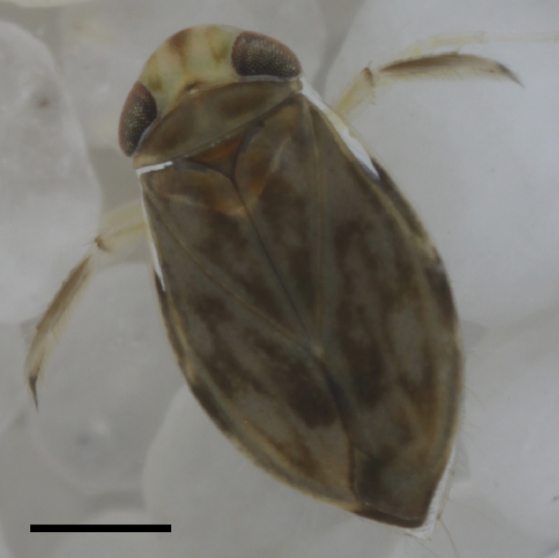 Micronecta scholtzi די היללס פון די אייראפעישע קאַנטריסייד זענען לעבעדיק אין די כאָר פון ליבהאָבער, שרייענדיק, זכר וואַסער באַגז. די ביסל ינסעקט אויבן, Micronecta scholtzi (Corixidae), מיט אַ וואַפּינג 2.3 מם און נאָך טראגט אַ קליקינג / באַזינג געזונט לייכט דייַטלעך צו דער מענטש אויער אויבן די וואַסער ייבערפלאַך. צו שטעלן דאָס אין פּערספּעקטיוו: טריינג צו הערן עמעצער רעדן אַנדערוואָטער בשעת שטייענדיק פּולסייד איז כּמעט אוממעגלעך, נאָך דעם מינוט ינסעקט דזשענערייץ אַ קליק הויך גענוג צו זיין טעות פֿאַר אַ ערדישע אַרטהראָפּאָד. כאָטש דאָס איז נישט צו ימפּרעסיוו ווען מיר זענען סעראַונדאַד דורך אנדערע הויך ינסעקץ ווי די סיקאַדאַ, ב. scholtzi טורנס אויס צו זיין אַ סטאַנינגלי הויך כייַע ווען איר נעמען אין באַטראַכטונג די גוף גרייס און מיטל די געזונט איז פּראַפּאַגייטיד דורך צו דערגרייכן אונדזער אויער. שטעלן אין נומערן די ינטענסיטי פון די קליקס אַנדערוואָטער קענען דערגרייכן אַרויף צו 100 דב (געזונט דרוק מדרגה, SPL). ייַנשרומפּן אונדז אין די ינסעקט וועלט און די געזונט פּראָדוקציע איז גלייַך צו אַ דזשאַקקהאַמער אין דער זעלביקער ווייַטקייט! אַזוי וואָס אויף ערד האט דערלויבט דעם קליין זשוק צו מאַכן דעם ראַש און באַקומען אַוועק מיט אים אין אַ וועלט פול פון פּרעדאַטערז?
די מחברים געוויינטלעך פונט אויס ווי חידוש די רעזולטאַטן זענען. דער ערשטער זאַך וואָס ווערט קלאָר איז אַז די וואַסער באָאָטמען מוזן האָבן קיין אָדיטאָרי פּרעדאַטערז זינט זיי בייסיקלי שווימען אַרום און מאַכן די מערסט ראַש פיזיקלי מעגלעך פֿאַר קיין קליין כייַע ערגעץ. טאַקע דאָס איז נישט צו חידוש ווייַל רובֿ אַנדערוואָטער פּרעדאַטערז זענען שטרענג וויזשאַוואַל כאַנטערז (דראַגאָנפלי לאַרווי, וואַסער באַגז און ביטאַלז עטק…). עס איז זייער מסתּמא אַז געשלעכט סעלעקציע האט גיידיד די אַנטוויקלונג פון די סטרידואַלאַטאָרי רופט אין אַזאַ אַמייזינג לעוועלס. די צווייט מערסט כידעשדיק זאַך איז קלאָר אַמאָל איר גראַפיק פּונקט ווי הויך די ינסעקץ זענען קאָרעוו צו זייער גוף גרייס. אין די שפּיץ פון די גראַפיק איז די באַטאַלנאָסע דעלפין (ה. truncatus) מיט זײַן באַרימטן סאָנאַר. אבער די גרעסטע אַוטלייער איז אַקשלי אונדזער קליין ינסעקט אין די דנאָ לינקס מיט די העכסטן פאַרהעלטעניש צווישן געזונט און גוף גרייס (31.5 מיט אַ מיטל פון 6.9). קיין אנדערע באקאנט כייַע קומט נאָענט. עס איז מסתּמא כאָטש אַז ווייַטער דורכקוק פון אנדערע וואַסער ינסעקץ קען געבן ענלעך אויב נישט מער חידוש רעזולטאַטן!
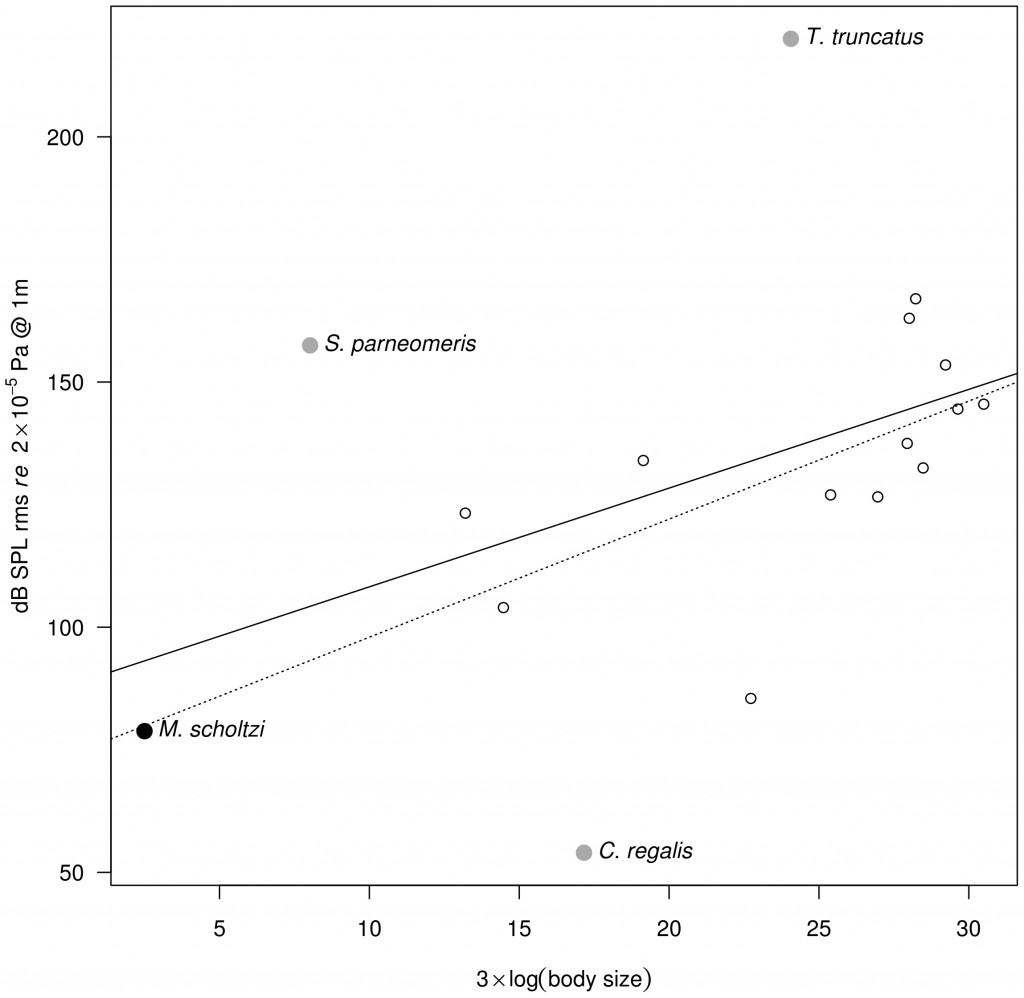
צו זיין מער פּינטלעך וועגן דעם “שרייענדיק”, די באַגז (באַגז אין דעם בייַשפּיל איז ריכטיק; די קאָריקסידאַע געהערן צו דער סדר העמיפּטעראַ – די אמת באַגז) זענען מסתּמא צו זיין סטרידואַלייטינג – ראַבינג צוזאַמען צוויי פּאַרץ צו דזשענערייט געזונט אַנשטאָט פון עקסהילינג לופט, דרומינג, אאז"ו ו… אין דעם אַרטיקל די מחברים ספּעקולירן אַז די “געזונט איז געשאפן דורך ראַבינג אַ פּאַרס סטרידענס אויף די רעכט פּאַראַמער (דזשענאַטאַל אַפּענדידזש) קעגן אַ באַרגרוקן אויף די לינקס לאָוב פון די אַכט אַבדאָמינאַל אָפּשניט [15]”. אָן פּולינג אַרויף זייער סייטיישאַן, עס אויס אַז סטרידיאַליישאַן דורך מאַלעס אין די מין איז געזונט דאַקיאַמענטאַד פֿאַר פּאָר אַטראַקשאַן. און ווי איר וואָלט דערוואַרטן, נייַעס אַוטלעץ און וויסנשאַפֿט פובליציסטן לייענען “דזשענאַטאַל אַפּענדידזש” און איבערזעצן אַז צו פּעניס: און איר סוף אַרויף מיט מעשיות אזוי. די פאַנגקשאַנז פון די פּאַראַמערעס קענען זיין לוסלי איבערגעזעצט צו ענלעך מאַנדיבלעס אין אַז זיי זענען אַפּאָוזינג סטראַקטשערז (יוזשאַוואַלי אַרמד מיט כערז) פֿאַר אָנכאַפּן. די די פּינטלעך נוצן פון זיי קען זיין אַנדערש דורך מינים אָדער אפילו אָרדערס, אָבער זיי זענען זייער בוילעט פֿון די פּעניס (= אַדעאַגוס) זינט זיי פשוט העלפֿן פאַסילאַטייט מייטינג און געבן קיין זיירע. אַזוי אין פאַקט איר האָבן דזשענאַטאַל “קלעפּלעך” מיט א “אַ סקרין פּאַרטיי”. און דער בעסטער געמעל פון אַ פּאַרס סטרידענס איז איבער אויף די אַלט בלאָג אַרטשעטיפּע. דעם סטרוקטור איז כיילייטיד אונטן אין געל (און כאַפּאַנז צו עקסיסטירן אויף די בויך פון די מוראַשקע). אבער בקיצור – עס איז אַ רעגולער גראָאָוועד ייבערפלאַך ענלעך צו אַ וואַשבאָרד. אין די סוף די זאַץ ציטירטן אויבן זאָל זיין איבערגעזעצט צו “צוויי סטראַקטשערז בייַ די שפּיץ פון די בויך וואָס רייַבן זיך ווי צוויי פינגער סנאַפּינג”.
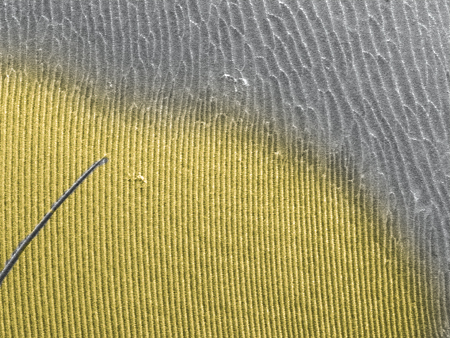 דעטאַל פון די פּאַרס סטרידענענס (אין געל) אויף די פאָרט אַבדאָמינאַל טערגיטע אין אַ Pachycondyla villosa אַרבעטער (סקאַנינג עלעקטראָן מיקראָגראַף, Roberto Keller / AMNH) Continue reading The incredibly loud world of bug sex
דורך קריס גרינטער, on June 20th, 2011 I’m going to keep the ball rolling with this series and try to make it more regular. I will also focus on highlighting a new species each week from the massive collections here at the California Academy of Sciences. This should give me enough material for… at least a few hundred years.
 Grammia edwardsii (ערעבידאַע: אַרקטיינאַע) This week’s specimen is the tiger moth Grammia edwardsii. Up until a few years ago this family of moths was considered separate from the Noctuidae – but recent molecular and morphological analysis shows that it is in fact a Noctuid. The family Erebidae was pulled out from within the Noctuidae and the Arctiidae were placed therein, turning them into the subfamily Arctiinae. OK boring taxonomy out of the way – all in all, it’s a beautiful moth and almost nothing is known about it. This specimen was collected in San Francisco in 1904 – in fact almost all specimens known of this species were collected in the city around the turn of the century. While this moth looks very similar to the abundant and widespread Grammia ornata, close analysis of the eyes, wing shape and antennae maintain that this is actually a separate species. I believe the last specimen was collected around the 1920’s and it hasn’t been seen since. It is likely and unfortunate that this moth may have become extinct over the course of the last 100 years of development of the SF Bay region. Grammia, and Arctiinae in general, are not known for high levels of host specificity; they tend to be like little cows and feed on almost anything in their path. So it remains puzzling why this moth wouldn’t have habitat today, even in a city so heavily disturbed. Perhaps this moth specialized in the salt marsh areas surrounding the bay – which have all since been wiped out due to landfill for real-estate (1/3 of the entire bay was lost to fill). Or perhaps this moth remains with us even today but is never collected because it is an evasive day flying species. I always keep my eye out in the park in spring for a small orange blur…
|
סקעפּטיסיזאַם
|














